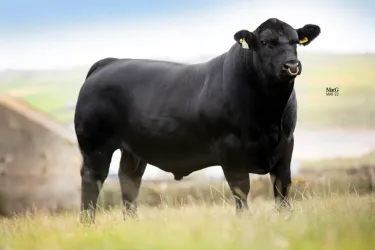Phil Eades, Dairy Farmer magazine, UK
Farmers using robotic milking systems should consider reviewing their breeding strategy to optimise performance from the robots, according to Ellen Rinell of Genus ABS.
Robotic milking systems continue to grow in popularity, with more than 1,000 robot installations in the UK, milking about 10% of all dairy cows.
It is estimated that more than half of all milking herds in north-west Europe will be milked by robots by 2025, with larger herds investing in automated milking than before.
With increased usage has come greater experience of how to manage cows to get the most from the investment, and Ellen Rinell, genetic services specialist at Genus ABS, suggests there could also be big benefits from ensuring cows are bred to best fit the specific requirements of automated milking.
Ms Rinell says: “If we look at the breeding goals for cows milked using robotic systems, there are some differences between these and conventionally milked cows.
“Having the right cow can improve the efficiency of robots by producing the most milk from the fewest cows and taking fewer minutes per cow milked.”
Feedback from users of automated systems report a number of issues which affect performance. Not surprisingly, many problems are related with udder conformation.
She says close rear teats can prevent teat cup attachment as the robot often identifies them as a single teat. Short teats can also cause problems.
Udders
Udders which are too shallow or too deep, as well as cows with extremely high rear udders, can also cause attachment issues.
Lameness is another cause of problems, as the cow is required to make her own way to the robot, meaning it must be good on its feet.
Once in the robot, milking speed and temperament are important. If milking speed is too slow, overall robot efficiency will drop, and farmers say they prefer calm cows as the teat cups will attach easier and cows do not become anxious.
Milking speed, called ‘ease of milking’, as well as temperament are two traits which can be con- sidered when selecting bulls.
Although they are subjective traits from parlour systems calculated by Holstein UK, studies have shown they have high genetic correlations to similar traits calculated in robot systems, making them very relevant for selection decisions.
Ms Rinell says: “Sires are rated on a scale from -3 [slow] to +3 [fast] on milking speed. While you may want to avoid sires rated -3 in robots, a score of +3 can often suggest milk leaking from the teat and so may be too extreme.
“A similar scale applies for temperament, with -3 being nervous and +3 placid, so using a group of bulls with a high average temperament score could be beneficial.
“These UK evaluations are only available for Holsteins and Friesians, but Canadian proofs are available on other breeds for the same traits.”
Teat placement
When considering udder traits, she advises against using the udder composite, explaining that it only has low weightings for rear teat placement and teat length, both of which are important with automated systems.
She says selecting on udder composite will tend to favour sires with average length teats which are close together.
Furthermore, the composite is highly weighted for udder depth, which again can make it difficult for the robot to attach. Ms Rinell says: “When assessing udder traits for robots, it is advisable to consider teat placement, teat length, udder depth and stature individually, but again to avoid extremes.
“At a score of +2 on teat placement, it is likely teats will be too close together to allow reliable attachment.”
She says to help simplify selection, it is possible to create a custom index to select bulls which are best suited for a robotic milking system in addition to other farm requirements.
Genus ABS’s mating programme, Genetic Management System, can be configured to specifically select cows and heifers best suited for robots and mate them with so-called ‘robot-ready’ bulls. Cows less suited for robotic milking rank lower and should be bred to beef.
Available sires in the Genus stud of high genetic merit which are also well suited to robot systems include Wilra ABS Amplify, ABS Crimson, Winstar Medina and Sandy-Valley Striker.
Breeding values
Research suggests it could be beneficial to calculate breeding values on novel traits using data generated by the milking robot, and take these into account when making selection decisions.
She explains a project in Norway has been investigating milking efficiency which is defined as kg milk produced per minute of occupancy, which is one of the best indicators of how cows utilise robots successfully.
Ms Rinell says: “The trial found three factors were particularly important.
“The first was flow rate, which directly influences milking speed, and, as mentioned earlier, you do not want slow milkers.
“The second is how much time a cow is standing in the robot, while the third is the number of times a unit gets kicked off which is related to temperament.
“As robot milking systems become more common, the need to maximise efficiency will remain a priority.
Phil Eades, Dairy Farmer magazine, UK






